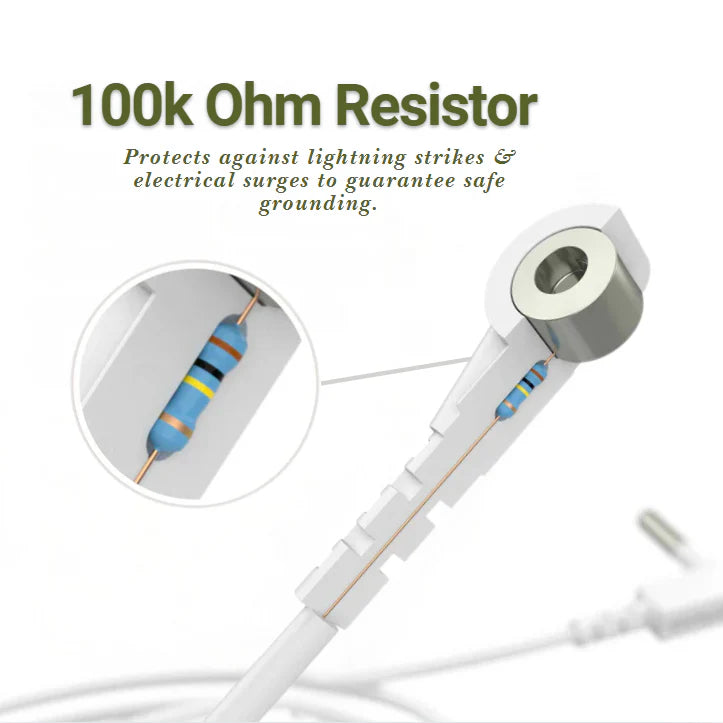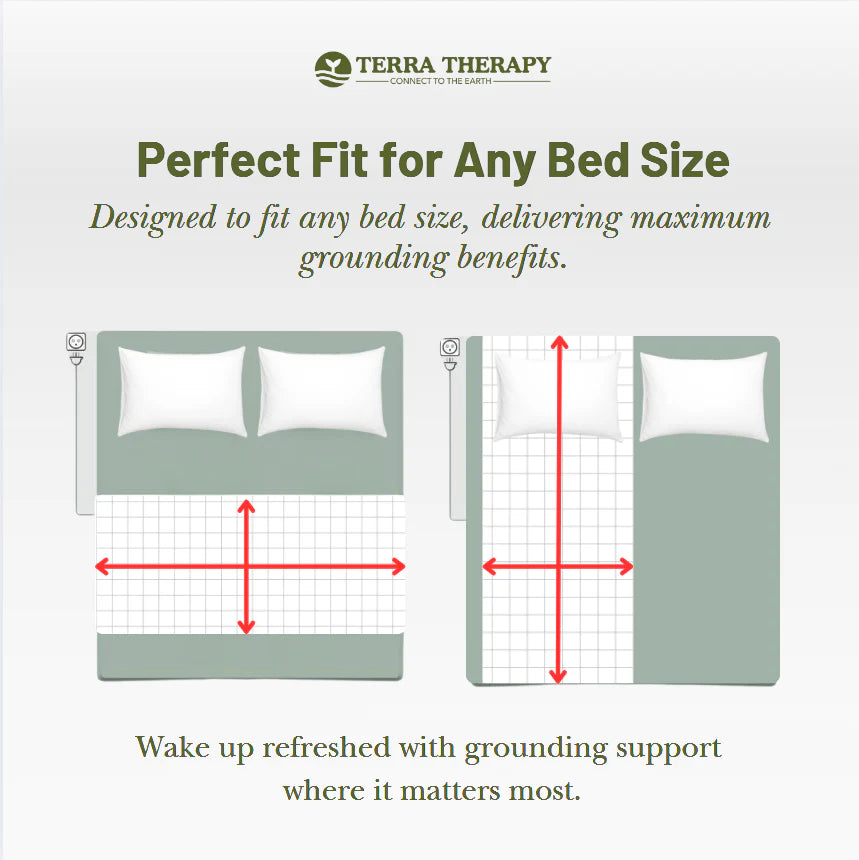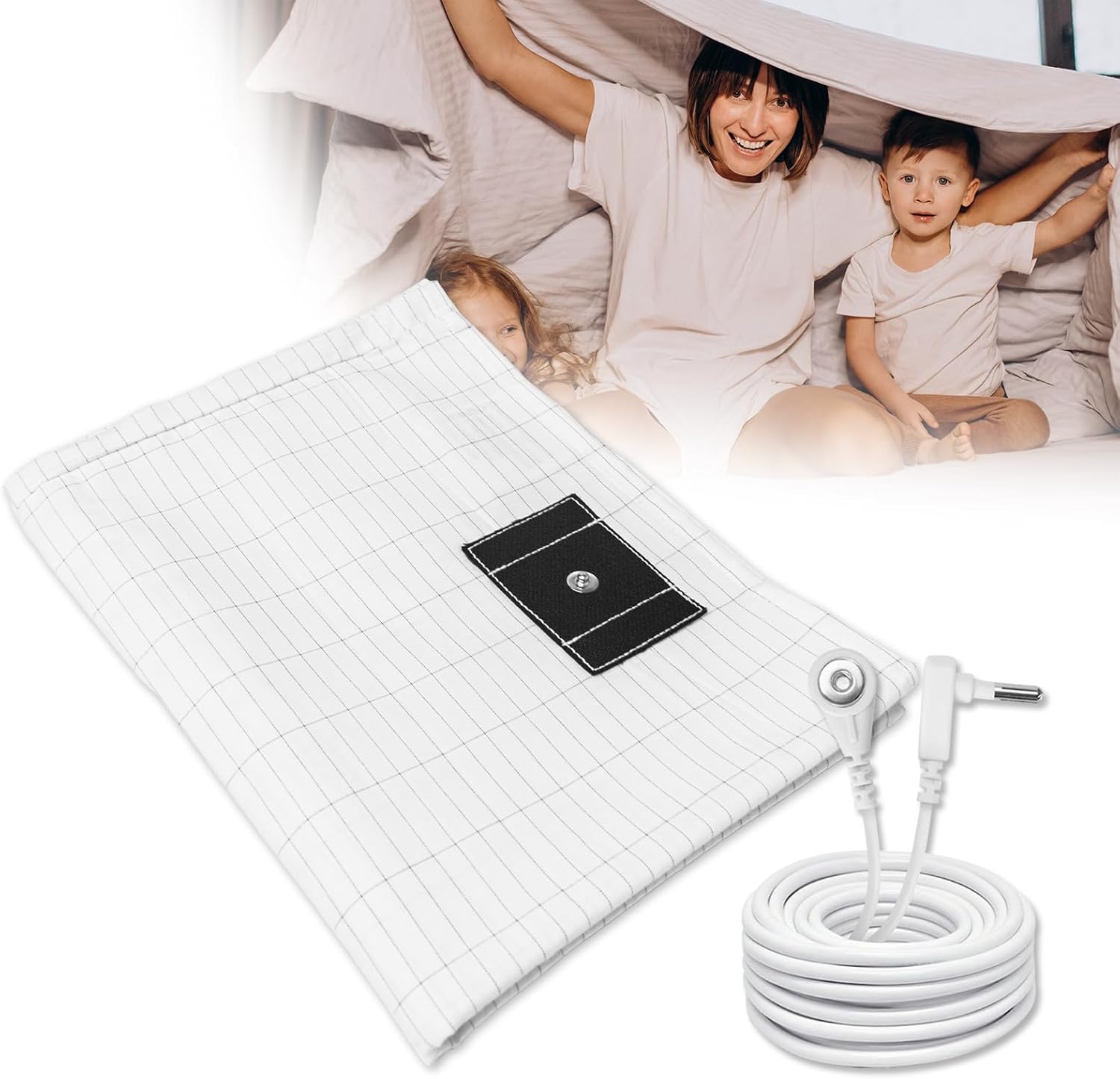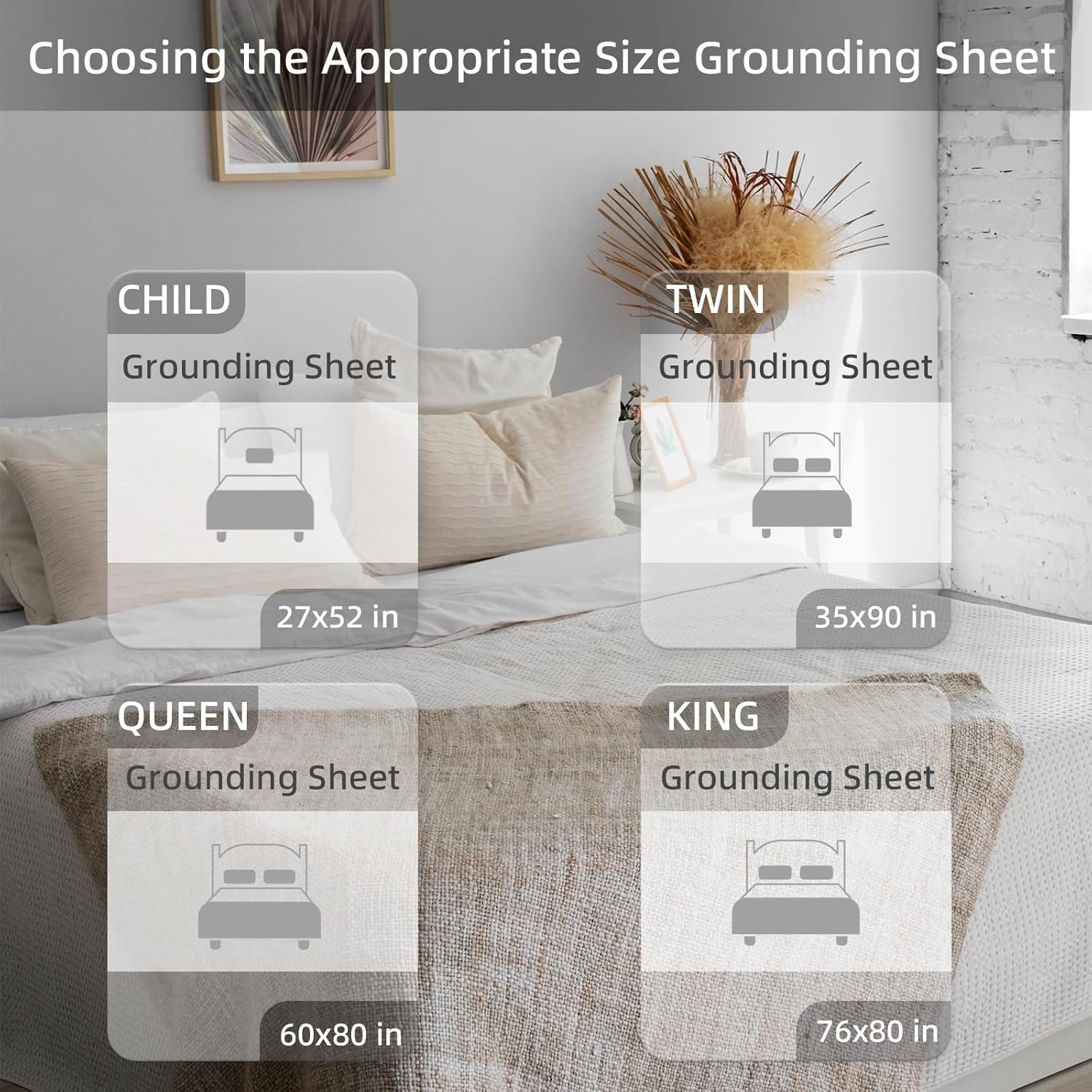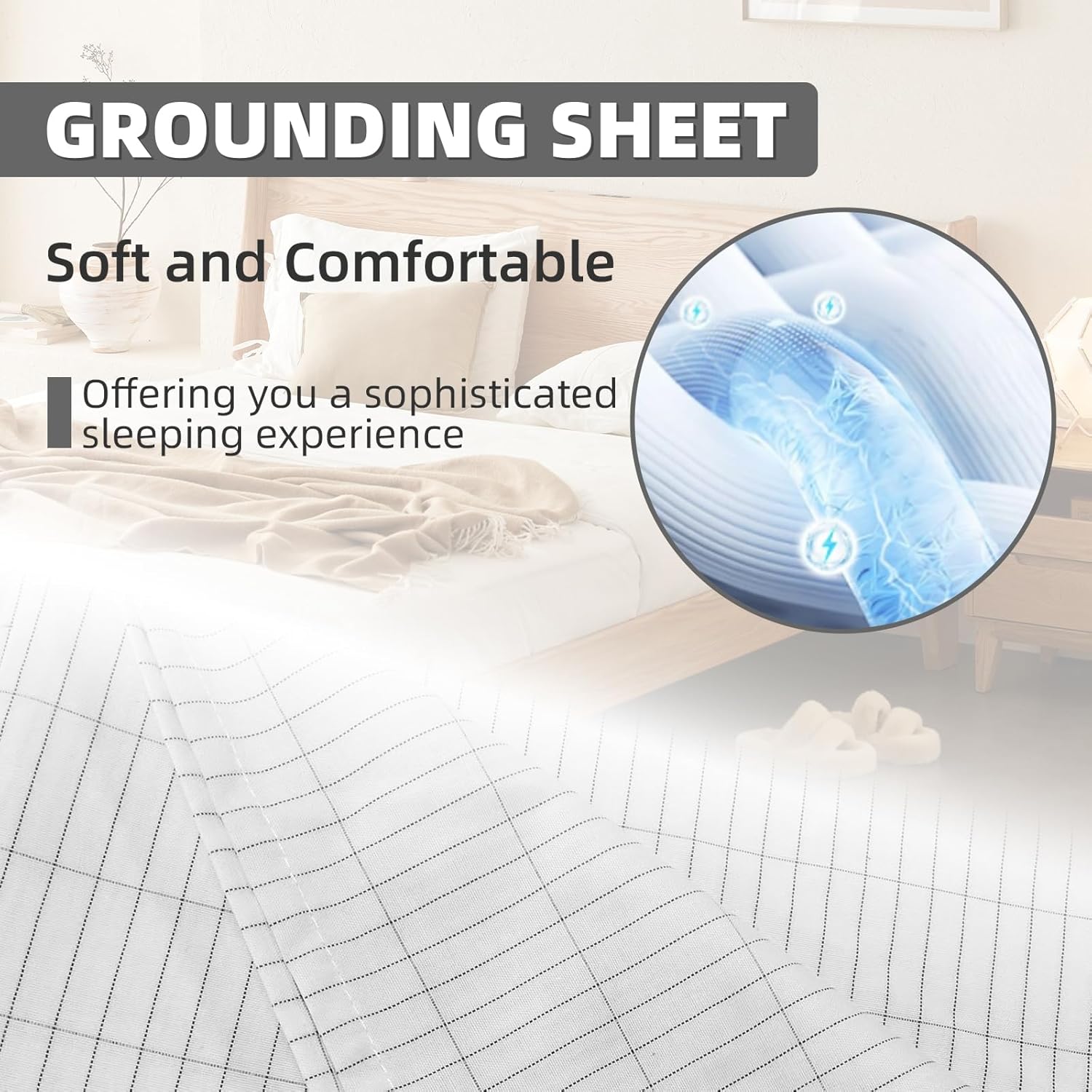How Long Should You Ground Every Day? Exploring the Path to Well-Being
How long should you ground each day in Australia for better health? In Australia, grounding for 15–30 minutes daily can help reduce stress, improve sleep, and support recovery. For those managing chronic pain or inflammation, 30–60 minutes or more may deliver greater benefits. Whether you're walking barefoot outside or using a grounding mat indoors, the key is consistency to fully experience grounding's health-boosting effects
How long should you ground each day in Australia for better health? Aim to ground for 15–30 minutes daily in Australia to reduce stress, improve sleep, and support recovery. For chronic pain or inflammation, 30–60 minutes or more may be ideal. Whether using grounding mats or walking barefoot outdoors, consistency is key to maximizing the benefits of earthing.
Grounding, or earthing, involves connecting to the Earth's natural energy to promote health and well-being. But how long should you ground every day to experience these benefits? Whether you’re using grounding mats, walking barefoot, or employing grounding sheets, the optimal duration varies from person to person. From quick resets lasting 15 minutes to extended sessions of an hour or more, this guide explores how to tailor your grounding practice for maximum benefits.
Grounding, or earthing, involves creating a direct connection to the earth to tap into its natural energy and healing properties. This practice, celebrated for its health benefits, varies in duration among individuals, but how long should you really ground yourself to experience its full effect? The answer hinges on understanding the intricate balance between the body's need for restoration and the connection to the earth's vast resources. Daily grounding, ranging from a few minutes to a couple of hours, is recommended to enhance overall well-being, with the duration tailored to personal lifestyle, health conditions, and accessibility to natural environments.
Exploring the optimal daily grounding time is not just about scheduling; it's about integrating a meaningful connection to the earth into everyday life. Whether through walking barefoot on grass, using conductive grounding sheets, or leveraging grounding mats, the objective remains the same: to harness the earth's energy for physical and emotional health improvements. While grounding mats offer convenience, especially for indoor grounding, walking barefoot outside connects you with nature and amplifies the grounding experience. Balancing these methods based on personal preference and availability can optimize the health benefits received from grounding.
Unveiling Grounding: A Path to Harmony
Grounding stands as a testament to the profound effect of the earth's energy on the human body's electrical systems. This natural connection, often overlooked, brings a multitude of benefits that contribute to a harmonious state of health. The effectiveness of grounding lies in its simplicity and the profound impact it has on recalibrating the body's electrical charge, promoting a sense of balance and well-being. By re-establishing our connection with the earth, grounding paves the way for a harmonious relationship between our physical health and the natural world.
The Essence of Grounding
The essence of grounding is deeply rooted in the interaction between the body's electrical systems and the earth's surface. This connection, facilitated by the conductive nature of the human body and the earth's surface, allows for the transfer of electrons, which has been shown to improve the effectiveness of grounding. The practice encourages a natural balance, reducing the body's electrical imbalances and promoting overall health. Understanding this interaction is key to appreciating the full scope of grounding's potential benefits.
Grounding Through the Ages: A Historical Overview
Since ancient times, grounding practices, including walking barefoot on grass and sleeping on the earth, have been integral to human health. Grounding sheets and indoor grounding methods have modernized these practices, making it easier to maintain a connection with the earth's energy. These innovations, alongside the use of conductive materials, have brought the ancient wisdom of grounding into the contemporary world. The historical perspective highlights a consistent effort to combat chronic inflammation and reconnect with the earth, showcasing grounding's enduring relevance.
The Science Unpacked: How Grounding Benefits Your Body
Scientific research into the benefits of grounding has revealed significant health advantages, including the reduction of muscle damage, inflammation, and cortisol levels. These findings underscore the body's positive response to direct contact with the earth's surface, highlighting grounding's role in promoting physical well-being. The reduction in muscle damage and inflammation points to grounding's potential in supporting recovery processes, while lowered cortisol levels suggest a stress-reducing effect, further affirming the practice's holistic health benefits.

The Optimal Grounding Schedule for Enhanced Well-Being
For enhanced well-being, incorporating a daily grounding routine that aligns with personal schedules and lifestyles is key. The flexibility of grounding practices, from brief connections to extended periods of earth contact, allows individuals to adapt their routines for maximum benefit.
Tailoring Your Grounding Routine
Creating a personalized grounding routine involves considering individual health needs, daily schedules, and available resources. Whether it's a short morning walk barefoot on the grass or using a grounding mat while working, the routine should aim to integrate grounding seamlessly into everyday life.
15-30 Minutes: A Quick Reset
Spending 15-30 minutes grounding each day can act as a quick reset for the body and mind, offering a brief yet effective way to reconnect with the earth's energy. This duration is particularly beneficial for those with busy schedules, providing a moment of calm and balance amidst the chaos of daily life.
30-60 Minutes: Deep Reconnection
A 30-60 minute grounding session allows for a deeper reconnection with the earth, facilitating reduced inflammation and a more profound sense of well-being. This longer duration is ideal for those seeking to enhance their grounding experience, offering ample time to absorb the earth's restorative energy.
1-2 Hours or More: Total Immersion
Engaging in 1-2 hours or more of grounding provides a total immersion experience, significantly benefiting those dealing with chronic pain and seeking improved sleep patterns. This extended contact with the earth fosters a deeper healing process, addressing chronic conditions and promoting a restorative sleep cycle.
The Significance of Routine in Grounding Practice
Establishing a routine in grounding practice is crucial for reaping its full benefits. Regular, consistent contact with the earth helps maintain the body's balance, enhancing overall health and well-being.
Adapting Grounding Time for Personal Needs
Adapting grounding time to personal needs is essential, especially for individuals dealing with chronic pain. Indoor grounding options provide flexibility, enabling consistent practice regardless of outdoor conditions or time constraints.
The Many Facets of Grounding Benefits
Grounding offers a wide array of benefits, from physical health improvements to mental and emotional well-being, showcasing its multifaceted nature in enhancing human health.
Physical Health Rejuvenation
Grounding significantly impacts physical health, with the implications of reconnecting the human body to the earth's surface including enhanced vitality and reduced health imbalances. This practice supports the body's natural healing processes, offering a foundation for rejuvenation and well-being.
Mental Clarity and Emotional Stability
The grounding techniques and daily grounding practices play a pivotal role in achieving mental health benefits, including improved mental clarity and emotional stability. These practices, by fostering a closer connection with the earth, help to alleviate stress and promote a sense of calm and balance.
Sleep Quality and Pain Alleviation
Grounding has shown promising effects in improving sleep quality and reducing pain levels. Incorporating materials like carbon or silver into grounding practices facilitates a natural connection with the earth, which acts like natural antioxidants for the body. When a person connects with the earth through a metal rod or directly, the earth's electrons flow into the body, which can help in reducing pain levels and enhancing sleep quality. This connection fosters a tranquil state, enabling deeper, more restorative sleep and a potential reduction in chronic pain, making it a valuable addition to daily wellness routines.
Grounding Techniques: From Basics to Advanced
For those new to grounding, starting with basic techniques that involve spending 10 to 20 minutes barefoot on natural surfaces can be significantly beneficial. This simple practice helps in reconnecting with the earth's natural electrical charge, offering a foundation for more advanced grounding practices. As individuals become more accustomed to these exercises, they can experiment with different durations and settings, gradually increasing their grounding time to deepen their connection and enhance the well-being benefits.
Embracing Nature: Outdoor Grounding Explained
Outdoor grounding, the most direct method, involves connecting with the earth's surface by walking barefoot on grass, soil, or sand. This practice allows the body to absorb the earth's electrons directly, which proponents believe can neutralize free radicals and improve health. Beyond just walking, sitting, or lying on the ground also contributes to one's grounding experience, offering an opportunity to connect with nature and reset the body's electrical balance, which can lead to improved health outcomes.
Indoor Grounding Methods: Staying Connected at Home
Even when indoors, it's possible to maintain an earth connection through the use of grounding sheets that plug into the grounding port of an electrical outlet. These sheets contain conductive materials that mimic the earth's natural electrical charge, providing a way to ground oneself during sleep or while stationary. This method is particularly beneficial for individuals living in urban environments or for those who cannot easily access natural outdoor spaces, ensuring the benefits of grounding are within reach, regardless of one's living situation.
Innovative Grounding Products for Continuous Benefits
The development of grounding patches, socks, and other products has made it easier to practice grounding without needing to be outdoors. These products are designed to reduce static electricity and support the body's circadian rhythm, potentially offering continuous grounding benefits. Grounding socks, for example, can be worn throughout the day to help maintain a connection to the earth's energy, while grounding patches can target specific areas of the body, offering a concentrated approach to managing discomfort and enhancing well-being.
Daily Grounding: Practical Tips and Strategies
Incorporating grounding into daily routines can be simple and effective. Starting the day by stepping outside barefoot allows direct skin contact with natural surfaces, setting a grounded tone for the day. Throughout the day, especially for those who spend long hours at a workspace, keeping a grounding mat under the desk can help maintain this connection. Before sleep, practicing grounding can be a calming evening ritual, promoting relaxation and potentially improving sleep quality. These easy-to-implement strategies ensure that individuals can benefit from grounding, regardless of their schedule.
Morning Rituals: Starting Your Day Grounded
Beginning the day with grounding practices can have a profound impact on well-being. Simple actions, such as walking barefoot on dewy grass or sitting on the ground while sipping morning tea, can invigorate the body and mind. This direct contact with the earth helps to harmonize the body's electrical state, potentially reducing stress levels and increasing energy. Incorporating such rituals into the morning routine can set a positive, grounded tone for the entire day.
Workspace Grounding: Staying Balanced Throughout the Day
To maintain balance and focus during work, incorporating grounding techniques into the workspace can be highly beneficial. Using a grounding mat benefits those who spend hours seated by providing a continuous connection to the earth's healing energy. This can help in reducing fatigue, enhancing concentration, and mitigating the negative effects of prolonged sitting. Regularly practicing grounding at the workspace can contribute to a more productive and balanced work environment.
Evening Practices: Grounding Before Sleep
Grounding before bedtime can assist in unwinding and preparing for a restful night's sleep. Engaging in practices that allow for direct skin contact with natural surfaces, like walking barefoot on the lawn or using grounding sheets, can help in calming the mind and body. This preparation for sleep is essential for those looking to improve sleep quality and overall health, making grounding a valuable evening practice.
Addressing Grounding Skepticism and Myths
Despite the growing interest in grounding techniques, skepticism remains. Some critics question the scientific validity behind the practice, arguing that more research is needed. However, grounding's proponents point to the mental health benefits and anecdotal evidence as strong indicators of its effectiveness. Clearing up misconceptions and providing accurate information is key to understanding grounding's potential benefits fully.
Common Misconceptions Debunked
One common misconception is that all grounding products, like earthing sheets, work the same way and provide identical benefits. However, the effectiveness of these products can vary based on their material and how they're used. It's important to research and understand the specific grounding product being considered to ensure it meets the individual's needs and expectations.
Grounding and Science: A Reality Check
Scientific studies on grounding have shown promising results, particularly regarding the reduction in inflammation. These findings support the theory that connecting with the earth's electrical charge can have tangible health benefits. While more research is needed to fully understand all of grounding's mechanisms and impacts, existing studies provide a foundation that suggests potential positive effects on physical health.
Personal Testimonies vs. Scientific Evidence
While personal testimonies about the effects of earthing abound, it's important to balance these accounts with scientific evidence. Many individuals report significant improvements in their health and well-being after incorporating grounding into their lives. However, grounding research is still evolving, and more rigorous scientific investigations are necessary to substantiate these claims comprehensively.
Grounding and Healing: Beyond the Physical
Grounding's benefits extend beyond physical health, touching on emotional and psychological well-being. The practice of connecting with the earth can offer a sense of calm and balance, which may help in managing stress, anxiety, and other emotional challenges. The effects of earthing on the mind highlight the interconnectedness of physical and mental health, underscoring grounding's role in holistic well-being.
Grounding for Emotional and Psychological Well-Being
The practice of grounding can play a significant role in enhancing emotional and psychological health. By fostering a deeper connection with the natural world, individuals may experience reduced stress levels, improved mood, and a greater sense of inner peace. These benefits demonstrate grounding's capacity to support not only the physical body but also the mind and spirit, making it a comprehensive approach to health and wellness.
The Role of Grounding in Chronic Conditions and Autoimmune Diseases
Grounding, often referred to as "earthing," has been explored as a complementary approach for individuals dealing with chronic conditions and autoimmune diseases. By re-establishing a direct connection with the earth’s natural electrical energies, grounding may offer a reduction in inflammation, a key factor in many chronic conditions. Studies suggest that grounding could improve circulation and sleep, enhance immune function, and reduce pain, offering a non-invasive way to potentially alleviate symptoms of autoimmune diseases.
Integrating Grounding into Your Lifestyle
Adopting grounding into daily life can be a seamless yet significant step towards improved well-being. It involves making direct contact with the earth’s surface, such as walking barefoot on grass or using grounding products like mats and sheets. Incorporating grounding practices into one’s routine, whether it’s spending time outdoors or utilizing a
grounding mat indoors, can foster a continuous connection with earth’s healing energies, promoting physical and mental health benefits.
Creating a Grounding-Friendly Environment
Creating a space that encourages grounding can significantly enhance one’s practice. Indoors, this can involve the use of grounding mats, which have shown benefits in connecting individuals to the earth's energies, potentially improving sleep and reducing chronic pain. Outdoors, dedicating a part of a garden or yard for barefoot activities can offer a natural grounding experience. Emphasizing natural materials and plants indoors can also mirror the calming effects of the outdoors, fostering a grounding-friendly atmosphere.
Grounding on the Go: Tips for Busy Lives
For those with hectic schedules, integrating grounding into daily life might seem challenging. However, simple strategies can ensure consistent practice. Carrying a pair of grounding shoes for outdoor walks, using adhesive patches connected to the grounding system at work, or allocating a few minutes of connecting with the earth during lunch breaks can make a significant difference. Even short periods of grounding can contribute to energy levels and overall well-being.
Navigating Challenges and Enhancing Your Grounding Experience
While grounding offers numerous benefits, individuals might face obstacles in practicing it daily. Urban living, for example, limits access to natural grounds. In such cases, innovative grounding products like mats and bedding can simulate the experience, enabling people to enjoy the benefits indoors. Additionally, weather and seasonal changes may hamper outdoor grounding, making it essential to adapt and find alternative methods to maintain the connection with the earth’s natural energies.
Overcoming Practical Obstacles to Daily Grounding
One of the main hurdles to daily grounding practice is the lack of direct access to natural surfaces, especially in urban environments. To overcome this, grounding mats and sheets can provide an effective indoor alternative, offering a way to connect to the earth’s beneficial energies. Understanding that consistency is key, scheduling regular indoor grounding sessions can help maintain the routine, ensuring continuous access to its potential health benefits.
Monitoring Your Progress and Adjusting Your Practices
Keeping track of one’s grounding journey can be instrumental in recognizing its effects on health and well-being. Noting improvements in sleep quality, energy levels, and reduction in pain can offer insights into the optimal duration and methods of grounding that work best for an individual. Adjusting practices based on personal observations and needs is crucial, as everyone’s body responds differently to grounding. This personalized approach ensures the most beneficial and enjoyable grounding experience.
Your Questions Answered: Everything You Want to Know About Grounding
Grounding, or earthing, has sparked curiosity and questions about its practice and benefits. From how to start grounding to its impact on health, it’s important to address common inquiries to help individuals understand and embrace this natural healing practice. Grounding involves direct contact with the earth, utilizing its natural electrical charges to improve health and well-being. Knowing the basics and benefits can inspire more people to integrate grounding into their daily routines.
How to Begin Your Grounding Journey
Starting a grounding journey is simple and accessible to everyone. Begin by walking barefoot on natural surfaces like grass, sand, or soil for a few minutes each day. For those unable to spend time outdoors regularly, grounding mats or sheets offer an alternative way to connect with the earth’s energies indoors. These products can help in replicating the benefits of outdoor grounding, supporting health by improving sleep and reducing stress.
Ideal Grounding Duration for Optimal Benefits
A pilot study suggests that even short periods of grounding can yield significant health benefits. Initially, aiming for 15-30 minutes of connecting with the earth each day can offer a quick reset for the nervous system and help in reducing stress. For deeper reconnection and more pronounced benefits, such as improved immune function and a reduction in pain, extending grounding time to 30-60 minutes or more might be more effective. The key is consistency and listening to one’s body to find the ideal duration.
Can Grounding Help With Specific Health Issues?
Grounding has shown promise in addressing various health concerns, particularly those related to inflammation and the circulatory system. Research indicates that grounding may help reduce blood viscosity, a factor in cardiovascular disease, by positively affecting the electrical charge of blood cells. This can improve circulation and potentially reduce the risk of heart disease. While grounding is not a substitute for medical treatment, it can be a beneficial complementary practice alongside conventional therapies.
Grounding: A Gateway to Natural Healing and Longevity
Grounding presents a natural, accessible way to enhance health and promote longevity. By connecting with the earth’s natural electrical energies, individuals can tap into a source of healing that has been part of human history for millennia. Modern lifestyles have disconnected many from these benefits, but through conscious practice, it’s possible to reclaim this connection, improving overall well-being and supporting a healthier, more balanced life.
The Future of Grounding: Trends and Innovations
The future of grounding looks bright, with innovations making it easier to incorporate into daily life. Grounding shoes and grounding mattress pads are becoming more popular, allowing people to stay connected even when indoors or in urban environments. Research continues to explore grounding’s effects on health, potentially leading to new applications and products. These developments promise to make grounding an even more integral part of holistic health practices.
The Global Grounding Movement: Joining Forces for Wellness
Around the world, individuals are joining the grounding movement, recognizing its potential to support health and well-being. This growing awareness is fostering a community of like-minded people, sharing experiences and advocating for a return to natural, earth-based practices. As more join this movement, the collective understanding and appreciation of grounding’s benefits continue to expand, promoting a global shift towards natural healing and wellness.
Embracing Earth's Healing Power: A Conclusion to Ground Every Day
The journey towards well-being through grounding is both ancient and profound, tapping into the earth's innate ability to heal. Grounding, or earthing, is not merely a practice but a reconnection to the earth's negatively charged electrons, which have been shown to offer health benefits that are as vast as they are vital. Studies, including those by Oschman JL and Sinatra ST, have highlighted grounding's capacity to improve heart rate variability, speed wound healing, and enhance overall physical health. By incorporating grounding into daily life, individuals harness the earth's healing power, potentially reducing inflammation and improving sleep quality.
The modern lifestyle often limits the time spent more time outdoors, yet the importance of reconnecting with the earth cannot be overstated. Terra Wellness Grounding mat benefits extend the healing touch of the earth into indoor spaces, making it easier to maintain a connection regardless of one’s schedule. Whether through the use of bed sheets connected to a conductive plug or standing barefoot on the grass, grounding offers a pathway to harness the earth’s restorative energies. As the global grounding movement grows, individuals around the world are rediscovering the simple yet profound act of touching the earth to improve well-being. Questions like "Do grounding mats work?" find their answers not just in scientific research but in the personal testimonies of those who have felt the subtle yet significant shifts in their health and vitality.
Use code BLOG20 for 20% OFF your grounding mat today.
👉 (Shop Now ➜)
FAQs
1. How long should you ground every day?
The ideal grounding time varies, but 15-30 minutes daily can provide noticeable benefits. For deeper results, such as reduced inflammation or improved sleep, aim for 30-60 minutes or more. Consistency is key.
2. Can grounding too much be harmful?
Grounding is generally safe. However, it’s important to use grounding products correctly, especially when connected to outlets. Consult a healthcare provider if you have health concerns.
3. Does grounding work better outdoors or indoors?
Outdoor grounding, such as walking barefoot on grass or soil, is most effective. However, grounding mats and sheets offer convenient indoor alternatives that replicate the Earth’s natural energy.
4. Can grounding improve sleep quality?
Yes, grounding can improve sleep by normalizing cortisol levels and promoting relaxation. Using grounding sheets or mats before bed can enhance rest and recovery.
5. How often should you ground yourself?
Daily grounding is ideal for optimal health benefits. Incorporating short sessions throughout the day can also be effective, especially for managing stress and pain.








